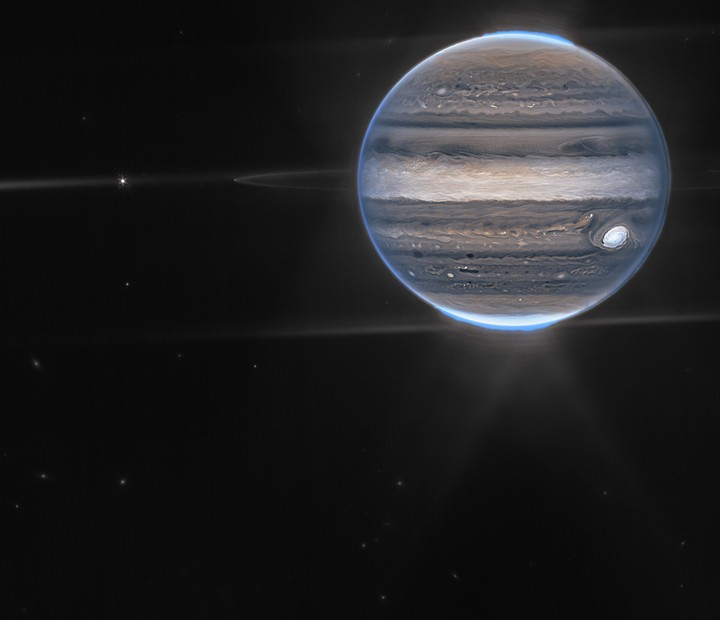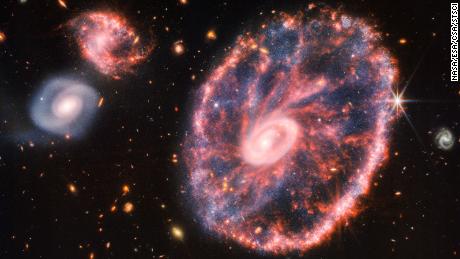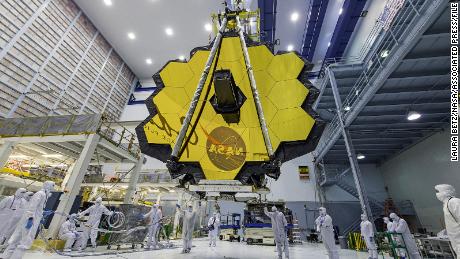
World’s Most Powerful Telescope Reveals Incredible New View Of Jupiter (Pics)
Even scientists didn’t expect Webb telescope images of Jupiter to be this good
The gas giant has 79 moons and is known as the ‘king of the planets’.
Rainbow auroras, giant storms and far-off galaxies are all on display in the latest images of Jupiter from NASA’s James Webb Space Telescope.
“We hadn’t really expected it to be this good, to be honest,” said planetary astronomer Imke de Pater, professor emerita at the University of California, Berkeley, in a news release.
De Pater and Thierry Fouchet, a professor at the Paris Observatory, led observations of the largest planet in our solar system using the Webb telescope — which is itself an international endeavor by NASA with the European Space Agency and Canadian Space Agency, NASA said.
Little Girl Practices Hair Plaiting With Her Dad’s Hairless Scalp (Pix, Video)
Painting a picture that moves from orange and yellow at Jupiter’s poles to blues and purples toward the center, several images from the telescope came together to form an overall composite and give Earth a look at the gas giant.
You can also see faint rings and far off galaxies “photobombing” in the background, according to NASA.
And Jupiter’s famous Great Red Spot — a storm big enough to engulf Earth — appears white in these images.
“The numerous bright white ‘spots’ and ‘streaks’ are likely very high-altitude cloud tops of condensed convective storms,” said Heidi Hammel, Webb interdisciplinary scientist for solar system observations and vice president for science at the Association of Universities for Research in Astronomy.
Scientists collaborated with citizen scientist Judy Schmidt to translate data to form the composite images from the telescope, which help give a better look into Jupiter’s life, NASA said.
Jupiter is hard to translate into images because of how quickly it rotates, said Schmidt, who’s based in Modesto, California.
“This one image sums up the science of our Jupiter system program, which studies the dynamics and chemistry of Jupiter itself, its rings, and its satellite system,” Fouchet said.






